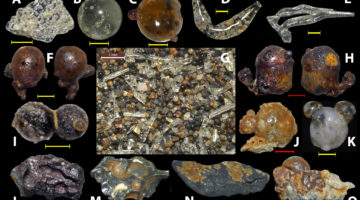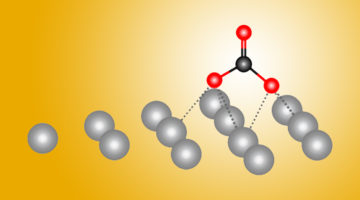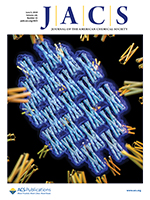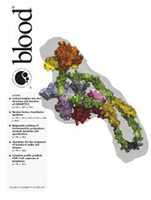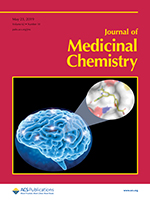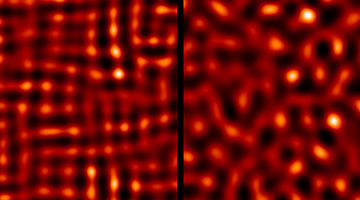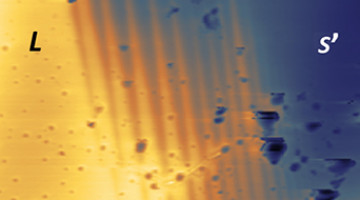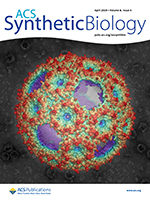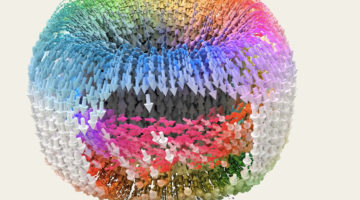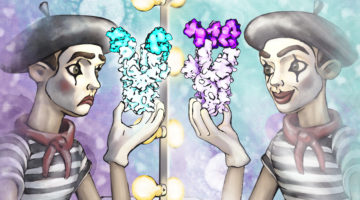Mario Wannier was methodically sorting through particles in samples of beach sand from Japan’s Motoujina Peninsula when he spotted something unexpected: a number of tiny, glassy spheres and other unusual objects. X-ray studies have provided evidence that they are A-bomb fallout from the destroyed city of Hiroshima. Read more »
A New Path to Carbon Dioxide Transformation
Combining ALS experiments with quantum-mechanical calculations, scientists found dramatic differences in how carbon dioxide (CO2) reactions begin on silver as opposed to copper. Both metals help transform CO2—a greenhouse gas—into more useful forms, and this new atomic-level data could help make the process more efficient. Read more »![]()
![]()
Self-Assembling 2D Arrays with de Novo Protein Building Blocks
Modular self-assembly of biomolecules in two dimensions (2D) is straightforward with DNA but has been difficult to realize with proteins, due to the lack of modular specificity similar to Watson–Crick base pairing. Here, researchers describe a general approach to designing 2D arrays using de novo designed pseudosymmetric protein building blocks. Read more »
Exploring the “minimal” structure of a functional ADAMTS13 by mutagenesis and small-angle X-ray scattering
Researchers used the SIBYLS beamline to gain insight into ADAMTS13, the only known protein to regulate the adhesive function of von Willebrand factor (VWF), a blood-clotting protein. When VWF is deficient or abnormal, it causes a common inherited bleeding disorder, von Willebrand disease. VWF is also implicated in arterial and deep-vein thrombosis, stroke, atherosclerosis, sickle cell crisis, and sepsis. Read more »
Design and Synthesis of Selective Phosphodiesterase 4D (PDE4D) Allosteric Inhibitors for the Treatment of Fragile X Syndrome and Other Brain Disorders
PDE4D enzymes are important for normal brain function. Mutations have been asssociated with an ultrarare neurodevelopmental disorder, and genetic variation in PDE4D contributes to biological variation in human cognitive ability. Here, researchers report on novel PDE4D inhibitors providing potent memory-enhancing effects in a mouse model, with improved tolerability and reduced vascular toxicity over earlier PDE4 inhibitors. Read more »
Superconductor Exhibits “Glassy” Electronic Phase
Researchers discovered that electrons in a high-temperature superconductor can exhibit a new type of collective behavior that is more “glassy” (disordered) than expected. The study provides valuable insight into the nature of collective electron behaviors and how they relate to high-temperature superconductivity. Read more »![]()
![]()
Infrared Light Reveals Microstripes at Insulator-Metal Transition
In this study of a current-driven insulator-to-metal transition, a distinctive stripe pattern develops between the insulating and metallic phases. The work reveals remarkable new features of electrically induced insulator-to-metal transitions in materials with potential applications in energy-efficient memory and transistor devices. Read more »![]()
Structural Characterization of a Synthetic Tandem-Domain Bacterial Microcompartment Shell Protein Capable of Forming Icosahedral Shell Assemblies
Bacterial microcompartments (BMCs) are subcellular compartments found in many prokaryotes, and they are of considerable interest for biotechnological applications. The BMC-H2 shell system constitutes a relatively simple generic building block that could be used to construct designed shells with a relatively highly tunable pore. Read more »
Electric Skyrmions Charge Ahead for Next-Generation Data Storage
Researchers have observed chirality for the first time in polar skyrmions in a material with reversible electrical properties. The combination of polar skyrmions and these electrical properties could one day lead to applications such as more powerful data storage devices that hold information even after a device has been powered off. Read more »
Antibody Uses Mimicry to Block SARS Coronavirus
Protein structures not only revealed how SARS and MERS antibodies inhibit the viruses from attaching to host cells, they also revealed an unprecedented example of receptor mimicry that triggers the cell-invasion machinery of the SARS virus. The results inform efforts to prevent and treat these serious, often deadly, respiratory diseases. Read more »![]()
![]()
- « Previous Page
- 1
- …
- 53
- 54
- 55
- 56
- 57
- …
- 83
- Next Page »
